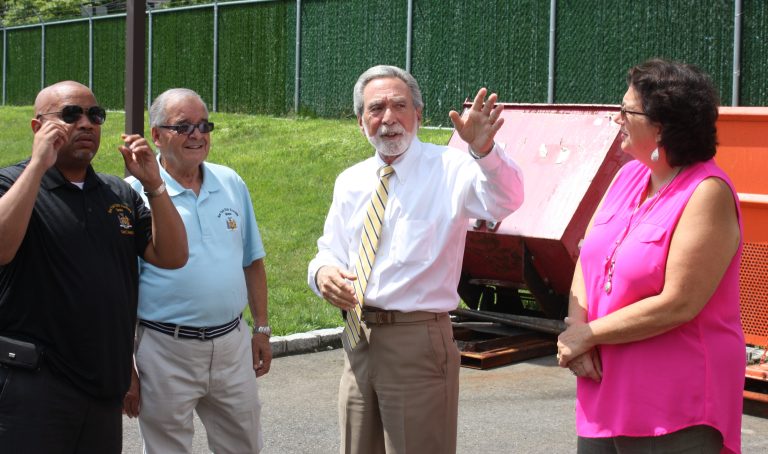
State Assembly Speaker Carl Heastie visited the North Shore and South Shore to see the consequences climate change has had on Long Island on Tuesday, with officials underscoring the importance of helping the environment.
Heastie toured both the Great Neck Water Pollution Control District’s East Shore Road facility, which has sought to be an environmentally friendly wastewater treatment plant and Baxter Estates Beach to study Manhasset Bay, as part of a larger statewide tour.
“It is important that we continue to focus on funding water treatment plants like the Great Neck Water Pollution Control District to protect our environment, while finding mechanisms to mitigate the effects of our wavering climate,” Heastie said.
Joining Heastie during parts of the day were numerous officials, including Town of North Hempstead councilwomen Lee Seeman and Anna Kaplan, Thomaston Mayor Steven Weinberg, Great Neck Estates Deputy Mayor Jeffrey Farkas, Sierra Club chair Jane Fasullo and Sarah Deonarine, head of the Manhasset Bay Protection Committee.
Officials said that Manhasset Bay has experienced “significant wetland loss” over the decades due to climate change, putting sidewalks, trees and vegetation at risk.
And Baxter Estates Mayor Nora Haagenson, also in attendance, said her community is at the forefront of climate change’s effects.
“The Village of Baxter Estates was honored to have a visit from New York Assembly Speaker Carl Heastie who came to observe first-hand the erosion at Baxter Beach and the threat to the infrastructure within the village caused by the erosion,” Haagenson said.
State Assemblyman Anthony D’Urso, the chair of the Assembly’s Long Island South Task Force and a member of the Environmental Conservation Committee, had invited Heastie to tour see Manhasset Bay and tour Great Neck’s wastewater management facility.
“There are many environmental issues currently affecting Long Island which will impact generations to come if we do not make them a priority,” D’Urso said. “Climate events will become more prevalent due to climate changes and chemical pollutants, which are an unfortunate reality.”
D’Urso added that facilities like those of the district’s plant are hoping to “combat these effects” through education, technology and cooperation.
On the facility tour, Heastie and officials saw the facility’s upgraded anaerobic digesters, which trap and convert methane into energy, microturbines, and an ultraviolet disinfection system.
According to water district officials, a third of the district’s electricity and 80 percent of its heat are generated on site. It also uses effluent water and minimizes its water use to save millions of gallons per year.
It also completed requirements imposed by the state Department of Environmental Conservation for removing nitrogen from water six months ahead of schedule, district officials said, with water in the district having 4 mg of nitrogen per liter — less than half of the 10.7 state requirement.
Heastie would also visit homes in Babylon still affected by Superstorm Sandy from 2012 and discuss the feasibility of installing a sea gate to try better protecting Long Island from storm surges.






